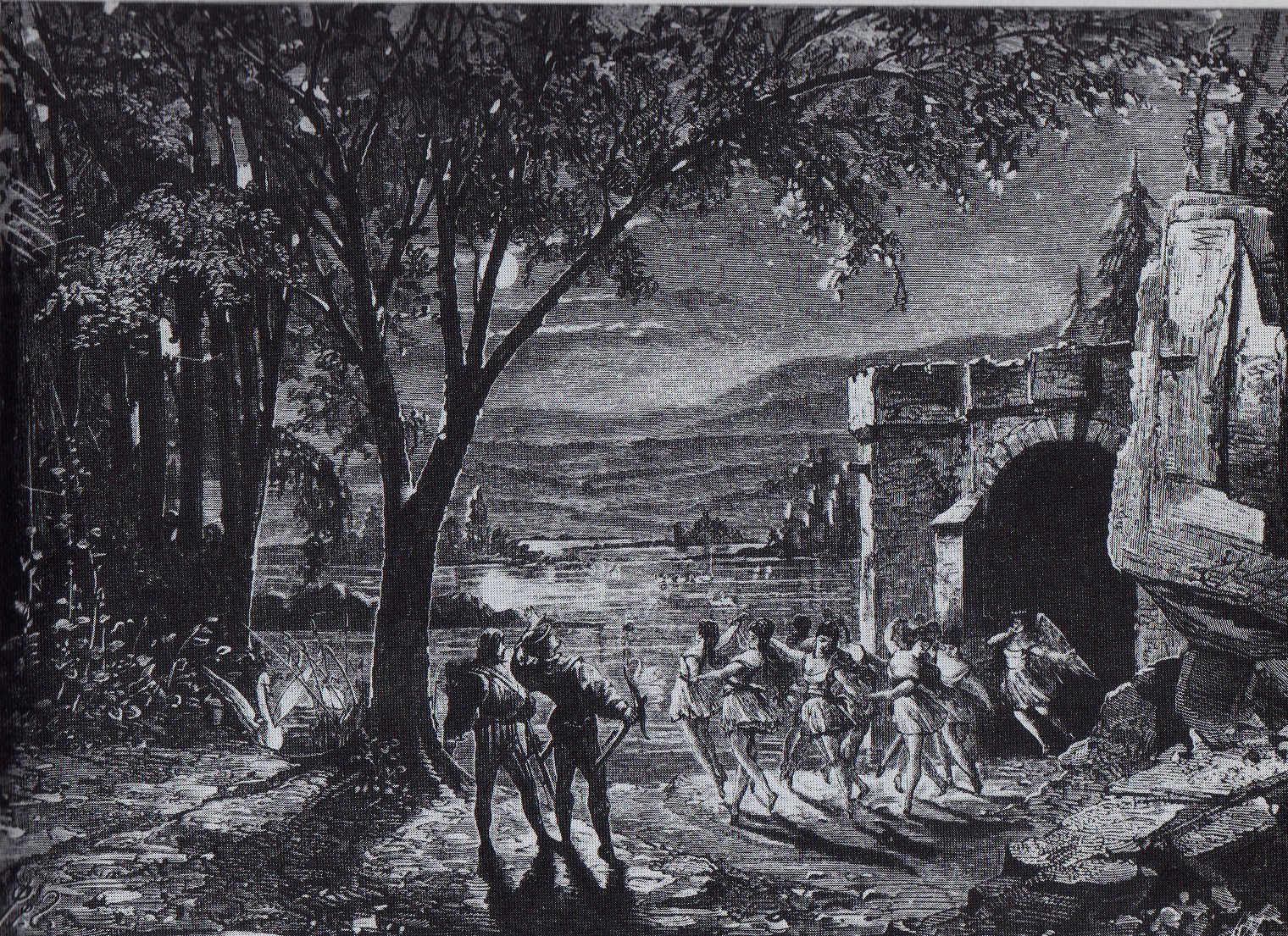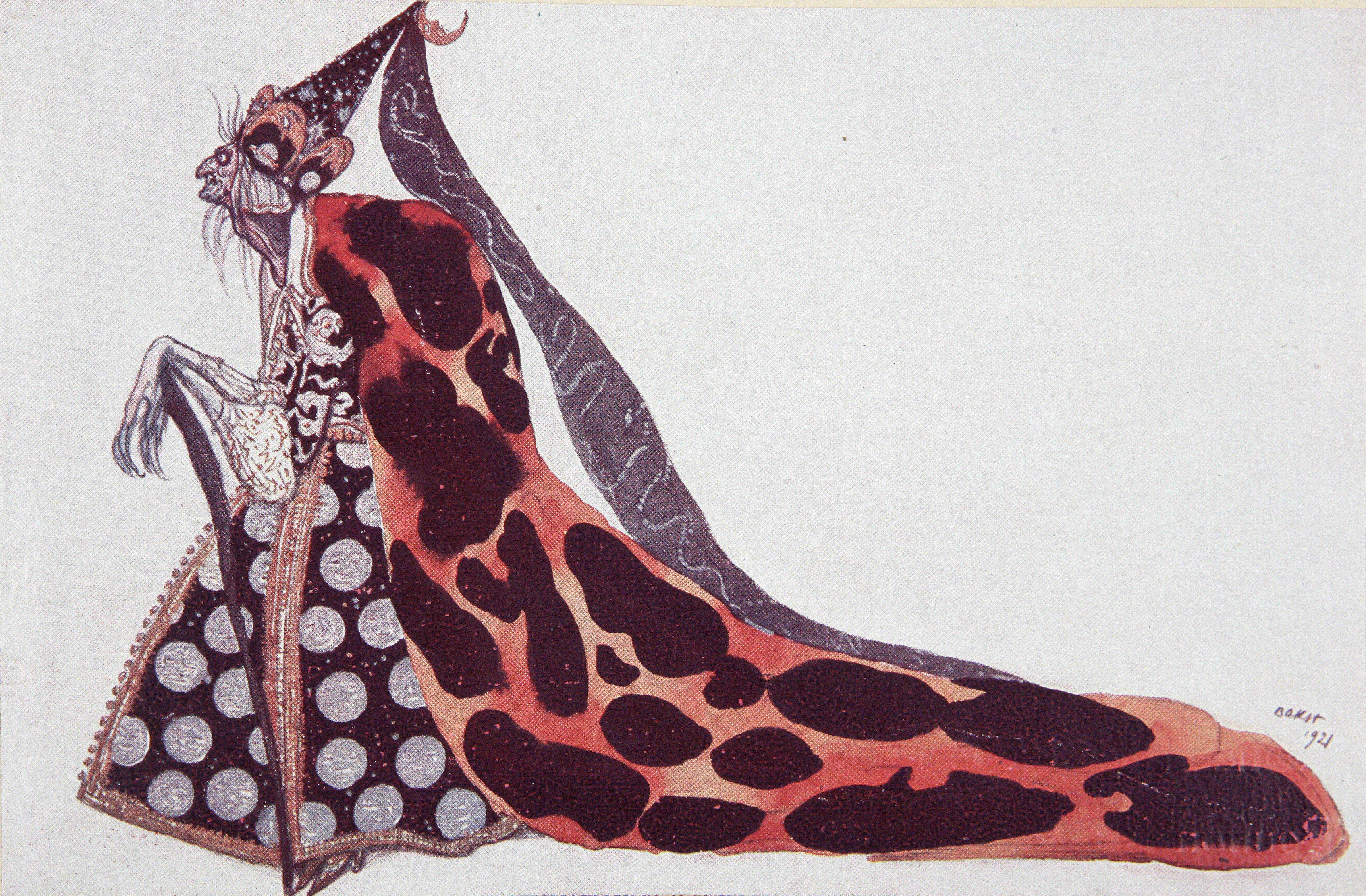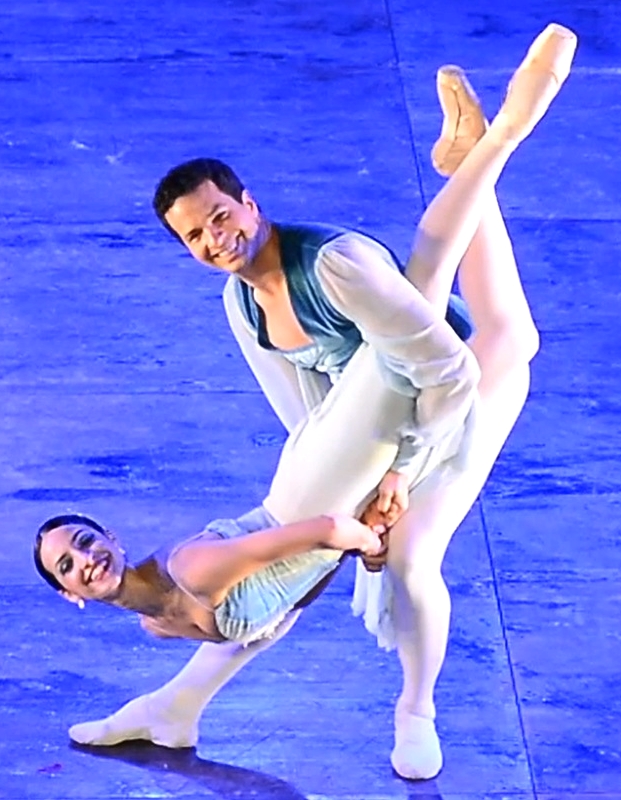|
Viacheslav Samodurov
Viacheslav Samodurov (russian: Вячеслав Самодуров; born 19 May 1974) is a former Principal dancer of the Royal Ballet, Covent Garden in London. Prior to this, he was a Principal Dancer at the Mariinsky Ballet, St. Petersburg and the Dutch National Ballet, Amsterdam. Career Born in Tallinn in Estonia in 1974, Samodurov trained at the Vaganova Academy in St. Petersburg. Viacheslav joined the Mariinsky Ballet's corps de ballet in 1992. In 1996, he became a soloist, and won the 1st Prize at the Maya International Ballet Competition, St. Petersburg. He relocated to the UK to join the Royal Ballet in 2003, and left the company in 2010. He is artistic director of the Yekaterinburg Ballet Company since 2011/12 season. He choreographed Amore Buffo after L’elisir d’amore by Gaetano Donizetti; Cantus Arcticus to the music of Einojuhani Rautavaara; The Salieri Variations to the music of Antonio Salieri; Colordelic to the music of Pyotr Tchaikovsky, Arvo Pärt and Fr ... [...More Info...] [...Related Items...] OR: [Wikipedia] [Google] [Baidu] |
Golden Mask (Russian Award)
The Golden Mask (russian: Золотая Маска, ''zolotaya maska'') is a Russian theatre festival and the National Theatre Award established in 1994 by the Theatre Union of Russia. The award is given to productions in all genres of theatre art: drama, opera, ballet, operetta and musical, and puppet theatre. It presents the most significant performances from all over Russia in Moscow in the spring of each year. The first Golden Mask award was given in 1995 presented by Union of Theatre Workers of the Russian Federation. The President of the Award is Igor Kostolevsky (who replaced the late Georgi Taratorkin in 2017). Categories *Drama – Best Large Scale Production *Drama – Best Small Scale Production *Drama – Best Director *Drama – Best Actress *Drama – Best Actor *Drama – Best Designer *Drama – Best Light Designer *Drama – Best Costume Designer *Puppetry – Best Production *Puppetry – Best Director *Puppetry – Best Designer *Puppetry – Best Actor *Inno ... [...More Info...] [...Related Items...] OR: [Wikipedia] [Google] [Baidu] |
Pyotr Tchaikovsky
Pyotr Ilyich Tchaikovsky , group=n ( ; 7 May 1840 – 6 November 1893) was a Russian composer of the Romantic period. He was the first Russian composer whose music would make a lasting impression internationally. He wrote some of the most popular concert and theatrical music in the current classical repertoire, including the ballets '' Swan Lake'' and '' The Nutcracker'', the '' 1812 Overture'', his First Piano Concerto, Violin Concerto, the ''Romeo and Juliet'' Overture-Fantasy, several symphonies, and the opera '' Eugene Onegin''. Although musically precocious, Tchaikovsky was educated for a career as a civil servant as there was little opportunity for a musical career in Russia at the time and no system of public music education. When an opportunity for such an education arose, he entered the nascent Saint Petersburg Conservatory, from which he graduated in 1865. The formal Western-oriented teaching that he received there set him apart from composers of the contemporary ... [...More Info...] [...Related Items...] OR: [Wikipedia] [Google] [Baidu] |
Symphony In C (ballet)
''Symphony in C'', originally titled ''Le Palais de Cristal'', is a ballet choreographed by George Balanchine, to Georges Bizet's Symphony in C. The ballet was originally created for the Paris Opera Ballet, and premiered on July 28, 1947 at Théâtre National de l'Opéra. Production Georges Bizet (1838 – 1875) wrote Symphony in C when he was 17-year-old student, and the score was not found until 1933. Composer Igor Stravinsky informed choreographer George Balanchine about this discovery. In 1947, as a guest ballet master at the Paris Opera Ballet, Balanchine choreographed the ballet, then titled ''Le Palais de Cristal'', to "showcase for the talent of the whole company." Balanchine paid homage to Léo Staats, a French choreographer he admired. According to NYCB, Balanchine created the ballet within two weeks. The following year, he restaged the ballet for Ballet Society, under the title ''Symphony in C'', and this version was featured in New York City Ballet's first progra ... [...More Info...] [...Related Items...] OR: [Wikipedia] [Google] [Baidu] |
Romeo And Juliet (MacMillan)
Choreographer Sir Kenneth MacMillan's Royal Ballet production of Sergei Prokofiev's ''Romeo and Juliet'' premiered at the Royal Opera House, Covent Garden on 9 February 1965. Background Kenneth MacMillan had previously choreographed the balcony scene for Lynn Seymour and Christopher Gable to dance in September 1964 for Canadian Television. This scene provided an essential part of the ballet's overall structure. Seymour stated that the balcony scene pas de deux only took three rehearsals to fully choreograph. This experience made him seem a good candidate to choreograph the entire ballet for Covent Garden, when the Soviet Union refused to allow Leonid Lavrovsky's classic production to tour to London. MacMillan prepared his version with the blessing of Frederick Ashton. MacMillan only had five months to choreograph the full ballet as The Royal Ballet hoped to perform Romeo and Juliet in its upcoming American tour. He, Seymour, and Gable planned the ballet around the charact ... [...More Info...] [...Related Items...] OR: [Wikipedia] [Google] [Baidu] |
Swan Lake
''Swan Lake'' ( rus, Лебеди́ное о́зеро, r=Lebedínoye ózero, p=lʲɪbʲɪˈdʲinəjə ˈozʲɪrə, link=no ), Op. 20, is a ballet composed by Russian composer Pyotr Ilyich Tchaikovsky in 1875–76. Despite its initial failure, it is now one of the most popular ballets of all time. The scenario, initially in two acts, was fashioned from Russian and German folk tales and tells the story of Odette, a princess turned into a swan by an evil sorcerer's curse. The choreographer of the original production was Julius Reisinger (Václav Reisinger). The ballet was premiered by the Bolshoi Ballet on at the Bolshoi Theatre in Moscow. Although it is presented in many different versions, most ballet companies base their stagings both choreographically and musically on the 1895 revival of Marius Petipa and Lev Ivanov, first staged for the Imperial Ballet on 15 January 1895, at the Mariinsky Theatre in St. Petersburg. For this revival, Tchaikovsky's score was revise ... [...More Info...] [...Related Items...] OR: [Wikipedia] [Google] [Baidu] |
The Sleeping Beauty (ballet)
''The Sleeping Beauty'' ( rus, Спящая красавица, Spyashchaya krasavitsa ) is a ballet in a prologue and three acts, first performed in 1890. The music was composed by Pyotr Ilyich Tchaikovsky ( Opus 66). The score was completed in 1889, and is the second of his three ballets. The original scenario was conceived by Ivan Vsevolozhsky, and is based on Charles Perrault's ''La Belle au bois dormant''. The choreographer of the original production was Marius Petipa. The premiere performance took place at the Mariinsky Theatre in St. Petersburg on January 15, 1890. The work has become one of the classical repertoire's most famous ballets. History Tchaikovsky was approached by the Director of the Imperial Theatres in St. Petersburg, Ivan Vsevolozhsky on 25 May 1888 about a possible ballet adaptation on the subject of the story of '' Undine''. It was later decided that Charles Perrault's ''La Belle au bois dormant'' would be the story for which Tchaikovsky wou ... [...More Info...] [...Related Items...] OR: [Wikipedia] [Google] [Baidu] |
Tchaikovsky Pas De Deux
''Tchaikovsky Pas de Deux'' is a ballet choreographed by George Balanchine to a composition by Pyotr Ilyich Tchaikovsky originally intended for act 3 of ''Swan Lake'' (Op. 20, 1875–76). With costumes by Barbara Karinska and lighting by Jack Owen Brown, it was first presented by New York City Ballet at the City Center of Music and Drama, New York, on 29 March 1960. Robert Irving conducted the New York City Ballet Orchestra. The dancers were Violette Verdy and Conrad Ludlow. Background In 1877, Anna Sobeshchanskaya, ''prima ballerina'' of the Bolshoi Theater in Moscow, made her debut in the dual role of Odette/Odile in ''Swan Lake''. After three performances, she was so dissatisfied with the choreography of Julius Reisinger that she asked for new material for the role of Odile in act 3. With permission from the producers, she traveled from Moscow to Saint Petersburg to ask Marius Petipa, ballet master of the Imperial Theaters, to set a ''pas de deux'' for Odile and Siegfried to r ... [...More Info...] [...Related Items...] OR: [Wikipedia] [Google] [Baidu] |
La Bayadère
''La Bayadère'' ("the temple dancer") (Russian language, ru. «Баядерка», ''Bayaderka'') is a ballet, originally staged in four acts and seven tableaux by French choreographer Marius Petipa to the music of Ludwig Minkus. The ballet was staged especially for the benefit performance of the Russian ''Prima ballerina'' Ekaterina Vazem, who created the principal role of Nikiya. ''La Bayadère'' was first presented by the Mariinsky Ballet, Imperial Ballet at the Imperial Bolshoi Kamenny Theatre in St. Petersburg, Russia, on . From the first performance the ballet was universally hailed by contemporary critics as one of the choreographer Petipa's supreme masterpieces, particularly the scene from the ballet known as ''The Kingdom of the Shades'', which became one of the most celebrated pieces in all of classical ballet. By the turn of the 20th century, ''The Kingdom of the Shades'' scene was regularly extracted from the full-length work as an independent showpiece, and it has re ... [...More Info...] [...Related Items...] OR: [Wikipedia] [Google] [Baidu] |
Hans Werner Henze
Hans Werner Henze (1 July 1926 – 27 October 2012) was a German composer. His large oeuvre of works is extremely varied in style, having been influenced by serialism, atonality, Stravinsky, Italian music, Arabic music and jazz, as well as traditional schools of German composition. In particular, his stage works reflect "his consistent cultivation of music for the theatre throughout his life". Henze was also known for his political convictions. He left Germany for Italy in 1953 because of a perceived intolerance towards his leftist politics and homosexuality. Late in life he lived in the village of Marino in the central Italian region of Lazio, and in his final years still travelled extensively, in particular to Britain and Germany, as part of his work. An avowed Marxist and member of the Italian Communist Party, Henze produced compositions honoring Ho Chi Minh and Che Guevara. At the 1968 Hamburg premiere of his requiem for Che Guevara, titled '' Das Floß der Medusa' ... [...More Info...] [...Related Items...] OR: [Wikipedia] [Google] [Baidu] |
Royal Ballet Of Flanders
The Royal Ballet of Flanders is a dance company based in Antwerp, Belgium, specializing in classical, neoclassical and contemporary ballet. In its current incarnation, the company was established in 1969. It tours internationally. History The current Royal Ballet of Flanders was established by Belgium's federal Ministry of Dutch Culture in 1969. Previously, Belgium had two professional classical ballet companies, the Royal Ballet of Flanders and . The Ballet royale de Wallonie, founded in 1966, was brought under the direction of Frédéric Flamand in 1991, who renamed the company Charleroi/Danse and shifted the focus of the troupe entirely onto modern dance. Jeanne Brabants was the founder and original artistic director of the Royal Ballet of Flanders. She was succeeded as artistic director by Rus Valery Panov, then Robert Denvers. In September 2012, Assis Carreiro was appointed Artistic Director of the Royal Ballet of Flanders and since her arrival has commissioned and prod ... [...More Info...] [...Related Items...] OR: [Wikipedia] [Google] [Baidu] |
Romeo And Juliet (Prokofiev)
''Romeo and Juliet'' (russian: Ромео и Джульетта, Romeo i Dzhulyetta), Op. 64, is a ballet by Sergei Prokofiev based on William Shakespeare's play ''Romeo and Juliet''. First composed in 1935, it was substantially revised for its Soviet premiere in early 1940. Prokofiev reused music from the ballet in three suites for orchestra and a solo piano work. Background and premiere Based on a synopsis created by Adrian Piotrovsky (who first suggested the subject to Prokofiev) and Sergey Radlov, the ballet was composed by Prokofiev in September 1935 to their scenario which followed the precepts of "drambalet" (dramatised ballet, officially promoted at the Kirov Ballet to replace works based primarily on choreographic display and innovation). Following Radlov's acrimonious resignation from the Kirov in June 1934, a new agreement was signed with the Bolshoi Theatre in Moscow on the understanding that Piotrovsky would remain involved. However, the ballet's original happy ... [...More Info...] [...Related Items...] OR: [Wikipedia] [Google] [Baidu] |
.jpg)




